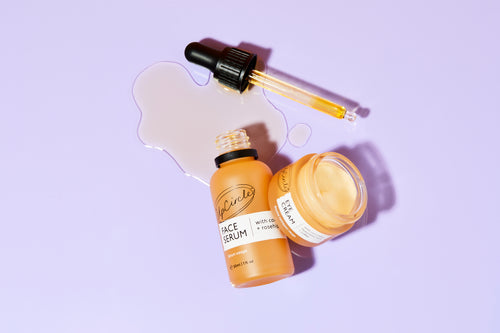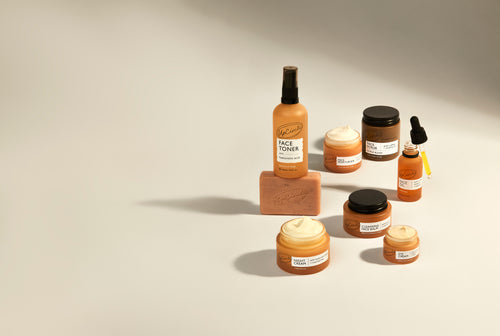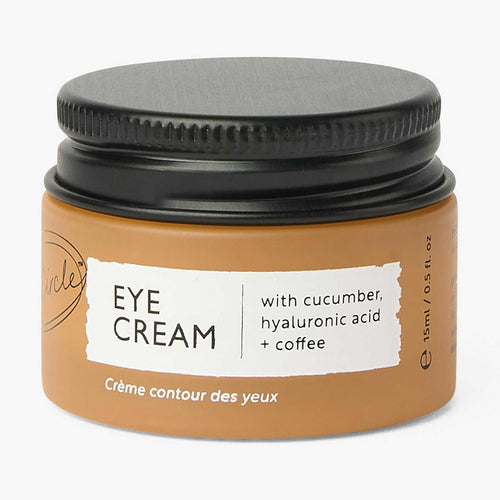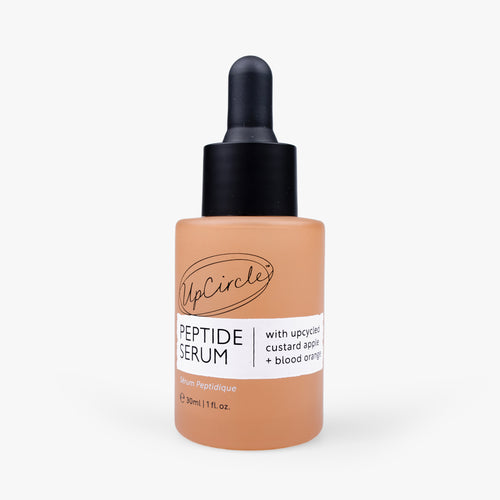New types of skincare products are forever being developed, so how do you know which is best? When debating between micellar water or cleansing milk for your skin, there are some things you ought to know.
Discover the difference between the two types of cleansers, as well as the benefits and disadvantages of each.
Micellar water vs cleansing milk: what’s the difference?
Despite both products working to remove traces of dirt and any impurities from the skin, micellar water and cleansing milk are very different types of products, serving different purposes.
Micellar water
Micellar water has been a staple in many skincare kits over the past few years, with many people being attracted by the ease at which you can use the solution, and the ‘simplicity’ of the product.
Micellar water needs to be used with a cotton pad or a cleansing cloth in order to effectively cleanse the skin. The solution contains micelles, which are structures containing a hydrophobic (repels water) and lipophilic (combines with or dissolves in lips and fats) core and a hydrophilic (attracted to water) shell. Makeup, dirt and any other impurities bind to these micelles and are removed from the skin.
Facial cleansing milk
A facial cleansing milk is a water-based face wash which is suitable for everyday use and gentle on the skin. This type of product is known for being incredibly lightweight and non-irritating.
Just as micellar water helps to remove impurities from the skin, cleansing milks also help to free your face from grime, sweat and makeup.
All about micellar water
Now you know the differences between micellar water and facial cleansing milk, we’re going to dive a little deeper into the benefits and drawbacks of using this type of cleansing product.
1. Glycerin helps to hydrate the skin
Many micellar water products contain glycerin which is effective in helping to keep your skin hydrated. As glycerin is a humectant, it helps to attract water from the air to your skin, keeping it topped up with all-important moisture.
2. Effectively removes dirt, makeup and oil
Likely the reason why most people use micellar water products in their skincare routines, the substance is highly effective in helping to remove traces of dirt, oil and makeup from the skin. This is due to the presence of micelles in micellar water, where the lipophilic centre traps oil and dirt as you sweep the solution across your skin.
3. Surfactants harm the environment and your skin
We’ve discussed the impact of surfactants in the hair care industry in a previous blog, but the same applies for skincare too. While micellar water typically contains only a mild surfactant – micelles – it’s still there.
Surfactants are chemical compounds that work to lower the surface tension between two liquids, a liquid and a solid or a liquid and a gas. Occurring widely in everyday life, they can function as emulsifiers, wetting agents, detergents, foaming agents or dispersants. In beauty and skincare products, surfactants (usually sulphates) are typically added to create frothy lathers or a gentle foam.
Studies have shown that harsh surfactants in cleansers can damage both skin proteins and lipids. While micellar water contains a mild surfactant rather than a harsh surfactant, any type of surfactant can damage the skin and cause tightness, dryness, skin barrier damage and irritation.
While some plant-based surfactants are being used in skincare products, a significant amount of micellar water products still use non-biosurfactants. Research has shown that after being used, residual surfactants in household products such as cleaning materials, personal care and skincare are washed away into sewage systems or directly into surface waters, dispersing in the environment. Harm to aquatic organisms and damage to vegetation, soils and watercourses can be a result of these residual surfactants.
Your guide to facial cleansing milk
Gaining more and more traction, cleansing milks help to gently remove traces of oil, pollutants and dirt from the skin. Discover the advantages and disadvantages of using facial cleansing milk vs micellar water.
1. Suitable for sensitive skin
Facial cleansing milks are more gentle on the skin than other types of cleanser due to largely containing natural ingredients and less chemicals than cleansers such as micellar water. Harsh chemicals added to skincare products are often the cause of irritation for those who suffer with sensitive skin.
2. Free from surfactants
Cleansing milks are made from a natural emulsion of oil or fats and water, rather than using surfactants to help cleanse the skin. This means that users can cleanse their skin without worrying that the chemicals will irritate their skin, or the residue going down the drain will harm the planet.
3. Perfect to use when double cleansing
Double cleansing is the latest weapon in your skincare arsenal, with the first cleanse removing dirt, pollution, sunscreen, and make-up, and the second cleanse focusing on the deeper layers of pore bacteria and congestion.
Cleansing milks are the perfect product to use for the second step of your double cleanse, gently removing any congestion and bacteria that the first cleanse may have missed. Leaving skin feeling soft, cleansing milk adds moisture back into the skin and does not leave the skin feeling dry and irritated, which can be the case with micellar water.
4. Sometimes less effective at removing makeup
All great things must have a flaw, and this is one of the only flaws of a facial cleansing milk. As a water-based cleanser, some cleansing milks can be less effective at removing makeup than an oil-based cleanser. It still gets to work on any impurities and traces of dirt, but we recommend using it after using a Vegan Oil-Based Cleansing Balm to get the most out of your skincare routine.
Cleansing milk or micellar water: which to choose
Deciding whether to choose micellar water or cleansing milk for your facial cleanser can be difficult, but it’s important to weigh up what you need the cleanser for – whether that be to remove makeup or everyday cleansing. You should also consider the environmental impact of the product on the planet, as not all cleansers are created equal!

UpCircle’s new vegan cleansing face milk
Suitable for all skin types, our new everyday vegan facial cleanser leaves skin buttery soft. It has been dermatologically approved for use on sensitive skin, and is also suitable for use on babies and children. This is all thanks to the upcycled oat powder; a gentle ingredient that works with (not against) the natural skin barrier to gently cleanse and protect. Formulated without SLS, sulphates, parabens and silicones, our cleansing milk is also 100% natural as well as vegan and cruelty-free.
We’ve answered some of our most frequently asked questions about our new Cleansing Facial Milk, including how it differs from our Cleansing Balm, and where to use it in your UpCircle skincare routine.
Shop for our all-new Vegan Cleansing Milk and other vegan and cruelty-free skincare products at UpCircle.







